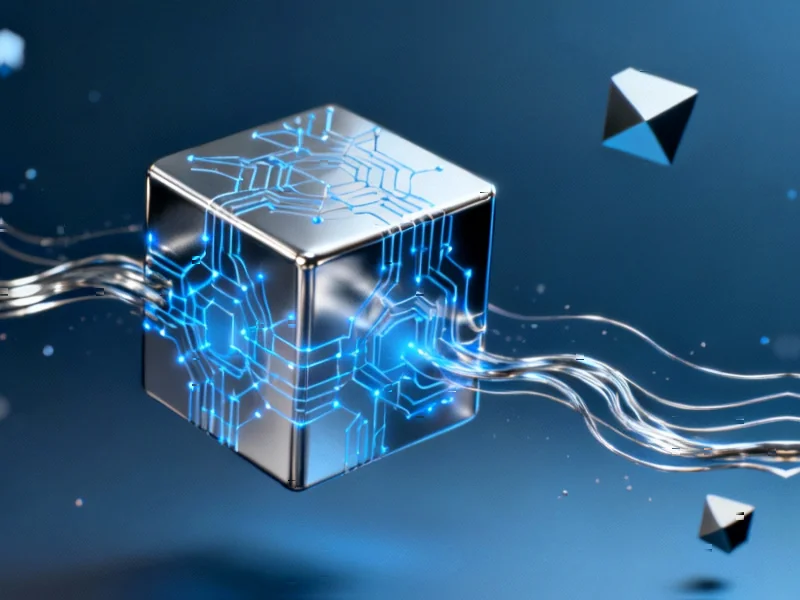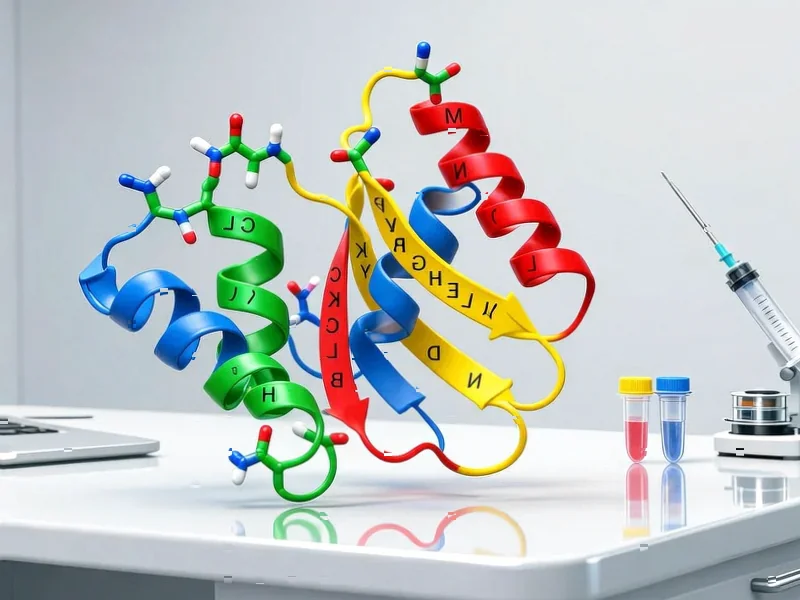According to Gizmodo, the AI and robotics industry is facing a scale problem that’s pushing companies toward decentralized “swarm” approaches. Startup Fortytwo published benchmarks showing its approach of running small AI models on personal computers has outperformed OpenAI’s GPT-5, Google’s Gemini 2.5 Pro, Anthropic’s Claude Opus 4.1, and DeepSeek’s R1 in reasoning tests. The company’s theory is that large AI models get stuck in reasoning loops while smaller models provide multiple answers that can be ranked for the best solution. Meanwhile, robotics researchers are developing colony-like communication systems where swarms of drones could monitor wildfires or microscopic robots could clear blockages in blood vessels. In one experiment, robots with only three basic abilities—move forward, make sound, and listen to neighbors—successfully navigated obstacles together that they couldn’t handle individually.
The Decentralization Revolution
Here’s the thing: we’ve been assuming bigger is better when it comes to AI models. But what if that’s completely wrong? The swarm approach basically turns that logic on its head. Instead of building ever-larger models that require massive data centers, you distribute the work across thousands of smaller models running on regular computers.
And the results are genuinely surprising. Fortytwo’s benchmarks showing they’re beating models like GPT-5 and Claude Opus? That’s not just incremental improvement—that’s potentially disruptive. It suggests we might be hitting diminishing returns with the “bigger model” approach while leaving low-hanging fruit in distributed computing.
What This Means for the AI Giants
So where does this leave the OpenAIs and Googles of the world? They’ve invested billions in centralized data centers, and now we’re seeing evidence that a decentralized approach might actually work better for certain tasks. That’s got to be concerning if you’re betting your entire company strategy on building the biggest models possible.
But here’s the catch: swarm approaches have their own challenges. Coordination, security, quality control—these aren’t trivial problems. Still, if Fortytwo’s approach proves scalable, we could see a major shift in how AI companies structure their infrastructure. The crypto-style reward system for people running models is clever too—it creates an incentive structure that could rapidly scale the network.
Robots Working Together
The parallel development in robotics is equally fascinating. Think about it: instead of building incredibly complex individual robots, you create swarms of simple ones that accomplish complex tasks through coordination. The wildfire monitoring example is perfect—if one drone fails, the others adapt. That’s resilience you just can’t get with single, expensive systems.
And the medical applications? Microscopic robots clearing blockages without surgery? That’s the kind of sci-fi becoming reality through swarm intelligence. The experiment with robots that only had three basic functions yet navigated obstacles together shows how powerful simple coordination can be. It’s like watching ants—individually not that impressive, but collectively capable of amazing things.
The Bigger Picture
What’s really interesting is how both these developments challenge our assumptions about intelligence and capability. We tend to think complex problems require complex solutions. But swarm intelligence suggests otherwise—sometimes the smartest approach is having many simple components working together.
Could this be the beginning of the end for the massive centralized AI model era? Probably not entirely—there will always be use cases where centralized models make sense. But the swarm approach opens up entirely new possibilities, especially for applications where resilience, distributed computing, or collective intelligence matter more than raw processing power.
The next few years are going to be fascinating to watch. Will the big AI companies adapt and incorporate swarm approaches? Or will we see a new generation of startups completely rethink how AI and robotics should work? Either way, the swarm is coming—and it might just be smarter than we ever imagined.




